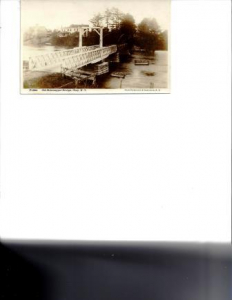Clay Sauerkraut HistoryPosted on January 14, 2019 |
REMEMBERING CLAY
Clay Sauerkraut History
Around 1900, the original company was owned and named for Jacob Weller, who dismantled the building located in North Carolina and set up his sauerkraut cannery on Route 31 in Clay at 8599 Weller Canning Street, still in existence. It was located behind the Clay Hotel. Another cannery owned by Ward Moulton of Phoenix joined him near by a short time later. Not just any cabbage can make a high quality sauerkraut. The Fremont Co., the nation’s second largest processor of sauerkraut, at one time sought help from Ohio State University. After much testing, it was decided that the local soil variations made those test valueless. What growers in Clay used was Glory and they were paid $8.00 a ton in 1942.
go back to 1932, both factories and canneries were destroyed by fire. It started about 4:00 a.m. when it was discovered by Harrison Bonsted, manager of the Weller factory; he called the local volunteer fire departments. Water was pumped from nearby ponds. Frank Sotherden’s coal yard and feed mill were saved although only four feet from one of the burning buildings. The factories, being made of wood with small brick additions, were a total loss. The Weller building was immediately rebuilt and put back in operation.
In 1942, the John W. Coughtry Cigar Company was no longer in business which left the Weller Company the only industry in Clay, the farmers having switched from growing tobacco to growing cabbage for the sauerkraut industry. Lemuel F. Ladd was the manager of the factory and also Justice of the Town of Clay. In an average season, the farmers would haul over 1,800 tons of cabbage to the factory. It was chopped and put into the 42 vats, each vat holding 43 tons. Fourteen pounds of salt is added to each vat and left to stand for 21 days to become edible. For canning, it stands for 45 days. Next the “kraut” is preheated, canned and run into the “exhaust box” where the heat is raised to 212 degrees Fahrenheit and the kraut remains for 12 minutes. Next the covers are placed on the cans; they go to the cooling room for 24 hours; then are labeled, placed in boxes and shipped to market.
The village store at that time was operated by Jay D. Crowell, whose clerk Godfrey Kisselburgh said that “Clay is the best town on the map.” He was the brother of the Rev. John Kisselburgh, pastor of Immanuel Lutheran Church. The brothers came to Clay from Athens, New York on the Hudson River. Calvin Bonsted operated the Clay Hotel; Station master was Delbert Borden; gas station owner was Curt Mackey; Maurice Sotherden of the coroner’s office was chief sir raid warden; Charles Driscoll was Postmaster; and Don Sotherden now managed the Feed Mill. An old-timer at that time, D A Richmond, reported that that was his real name. He was named after an ancestor, the Rev. A. D. Youngs who came over on the Mayflower. Getting off the ship he was in such a hurry, he said his name was DA. Richmond’s father thought that was a good name for him. His mother, Elizabeth Young was the daughter of Squire Pete Young, whose father was the first white man buried in Pine Plains Cemetery. Again, in 1942 the plant was completely destroyed by fire. Due to the scarcity of supplies during WW II, permission wasn’t granted to rebuild until 1945. This time it, was built with cinder blocks.
Again, the company suffered from a gutting fire and the final building used for processing and canning sauerkraut was built in 1956. It was bought by the Fremont Kraut Co. of Fremont, Ohio canners of Snow-Floss sauerkraut, which was not available in our area under that name. Around March 1, 1977, Harry Crowel, who had been plant manager since 1973, received an edict from the parent company that local operations must be halted by June 1 or thereabouts. The market for sauerkraut in New York State was decreasing compared to Ohio where Fremont had other processing plants. Also, this local plant was having difficulty complying with the increasingly strict ct regulations of the Department of Environmental Conservation (DEC) covering pollutant discharge elimination. The fact was that the local farmers were using the outside cabbage leaves as fertilizer and plowing them into their fields. However, the cleanup was the problem as the plant needed untold gallons of water, which must be discharged. To satisfy the waste water requirements ecologically, the additional investment would not be profitable. The Clay plant must go.
Hughson, many years ago, described to me his memories of working there as a young man. Between three and five tons of cabbage was processed and distributed all over the country each year with either the company’s Snow-Floss of arry Crowell who had been plant manager in Crere
Brand label or local labels as Loblaws. Cutting of the cabbage began August 1 and continued through early November. He remembered forking the cut cabbage into 12-foot diameter vats for processing. Fermentation took from four to six weeks. The cans were still filled by hand starting in mid-September and ending in February although other plants had become automated. To the very last, they supplied local markets and restaurants before they closed.
Most of the cabbage came from local farmers in Lysander, Baldwinsville, Westmoreland and Plainville. They could either haul their produce to a distant canning factory where local farmers there were supplying them, or plant a new and different crop. As for the building itself, at that time there was no future plan for its use; it would probably have to be renovated. That was over 40 years ago and that area on Route 31 east of the railroad tracks is getting a new update. Be watching for the improvements and a story!
Dorothy Heller, Historian
12-21-2018
Other
Remember Clay Stories

Steamboats
Remembering Clay | May 10, 2016
REMEMBERING CLAY
Steamboats on Oneida Lake and Oneida River*
The Sotherden's Part II
Remembering Clay | Sep 24, 2018
REMEMBERING CLAY
The Sotherden Beginning Part II
Morgan Rd. Church
Remembering Clay | Jul 14, 2016
REMEMBERING CLAY
Morgan Road Church Has a Fresh Look
